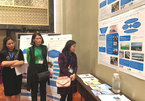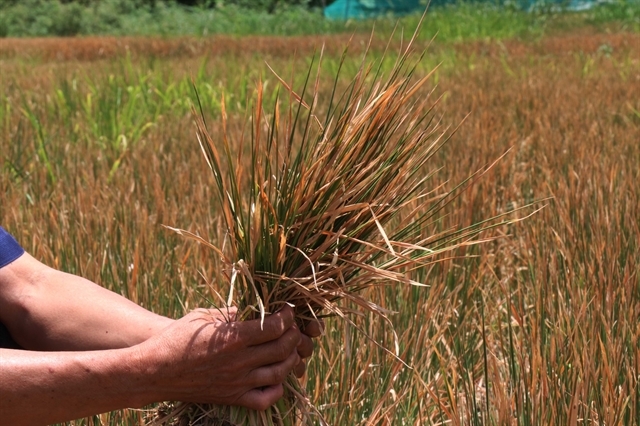|
||
|
More than 500ha of rice in M’Đrắk District, the Central Highlands provinces of Đắk Lắk, is damaged by extreme hot weather in August, 2019.
|
The strategy aims to foster innovations and build action plans to ensure water resources for farming, socio-economic development and daily use.
It hopes to maintain a stable water supply for 85 per cent of rice cultivating areas by 2030 and innovative farming methods applied in some 60 per cent of rice cultivating areas by 2050 nationwide.
Disaster-prone regions including the coastal centre, Central Highlands and Mekong Delta are priorities, especially in terms of environment protection, aquatic ecosystem conservation and sustainable development.
The Mekong Delta, Việt Nam’s rice bowl and home to 21 million people, has been suffering from severe drought and saline intrusion in recent years.
According to the National Centre for Hydrometeorological Forecasting, the region will see a drop of 30-45 per cent in water flow by February 2020. In the next few months, drought and saline intrusion may be as devastating as the historic drought in 2016.
From June to October 2019, rainfall in the upper Mekong region decreased 35 to 40 per cent, leading to the lower water level in the upper part of the Mekong River.
Facing the situation, Ministry of Agriculture and Rural Development urged Mekong Delta provinces to start cultivating the winter-spring rice crop earlier than usual, in October instead of November, and store water.
In mid-2019, central provinces and the Central Highlands were hit by a extreme and prolonged heatwave.
Hot weather caused lower water levels in reservoirs, dams and rivers leaving millions of people facing water shortages last summer. — VNS

A legal framework for water supply essential in Vietnam
Tighter regulations are needed to ensure good quality water is sourced for years to come.
 By 2050, 60% of farming areas in Vietnam will be equipped with water-saving irrigation systems, according to the country's Water Management Strategy, which was recently approved by Deputy Prime Minister Trinh Dinh Dung.
By 2050, 60% of farming areas in Vietnam will be equipped with water-saving irrigation systems, according to the country's Water Management Strategy, which was recently approved by Deputy Prime Minister Trinh Dinh Dung.